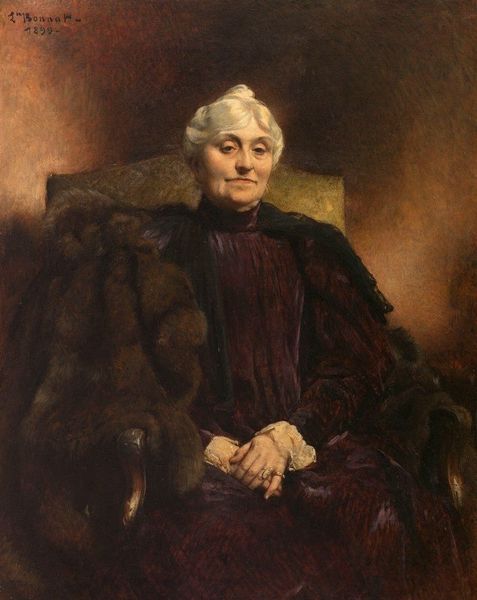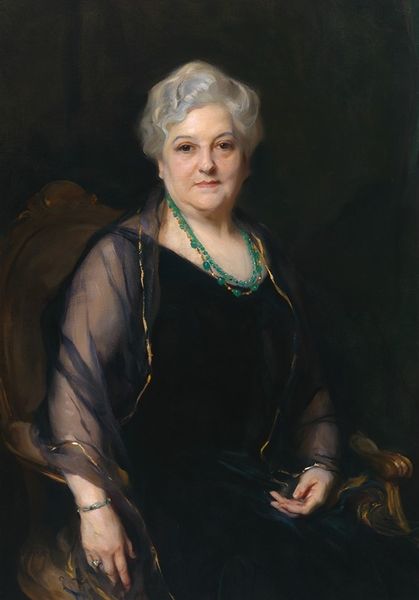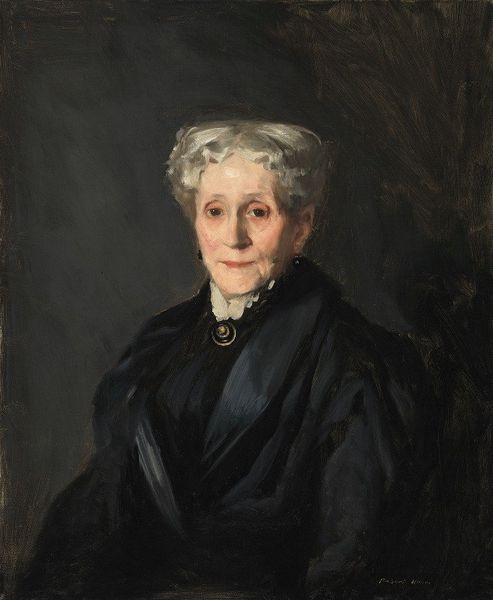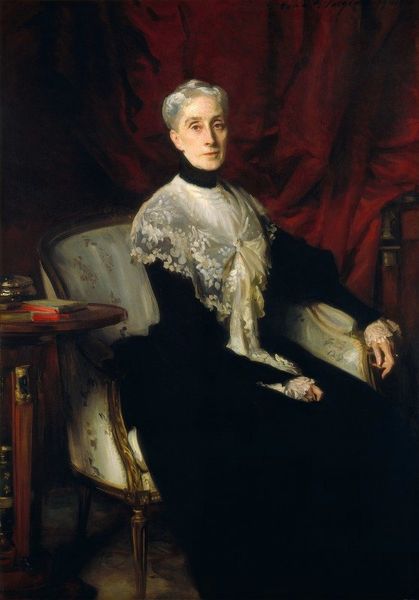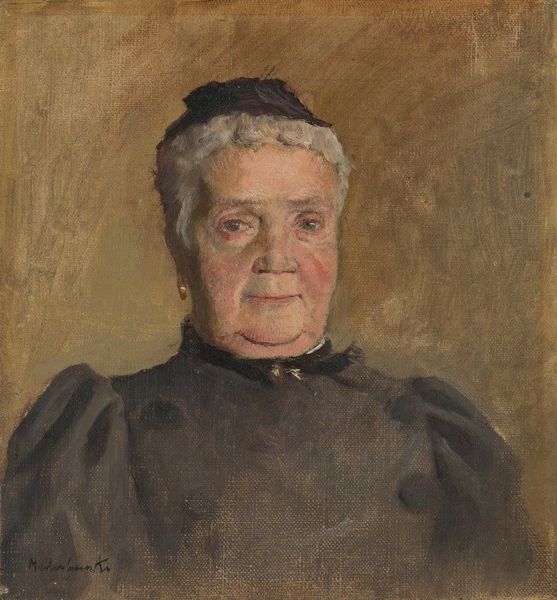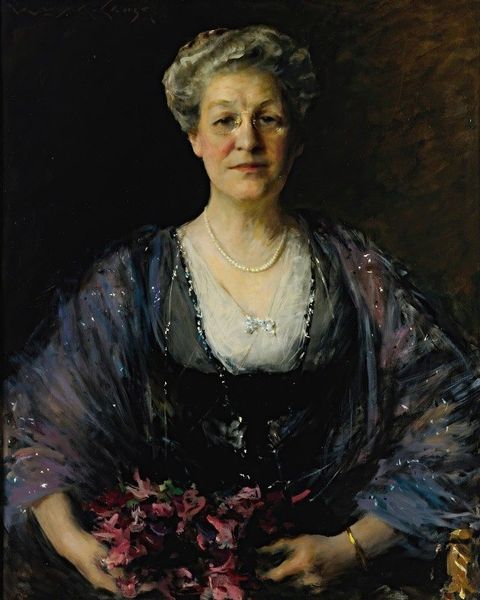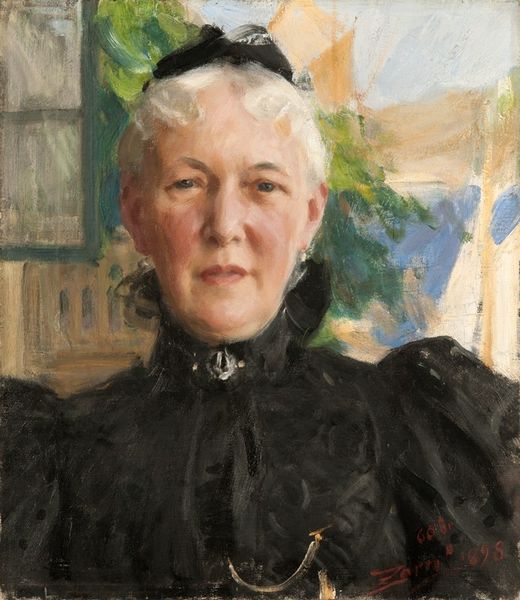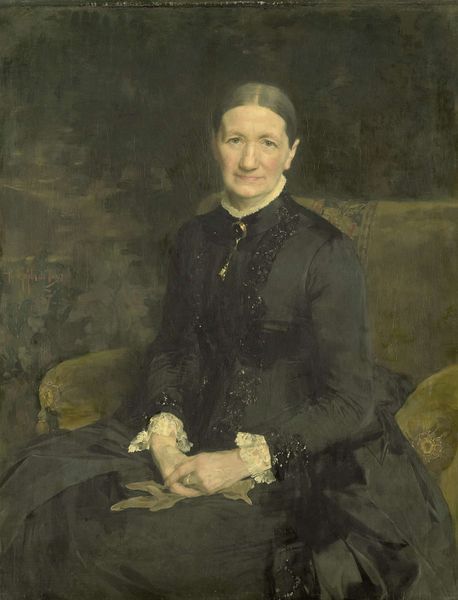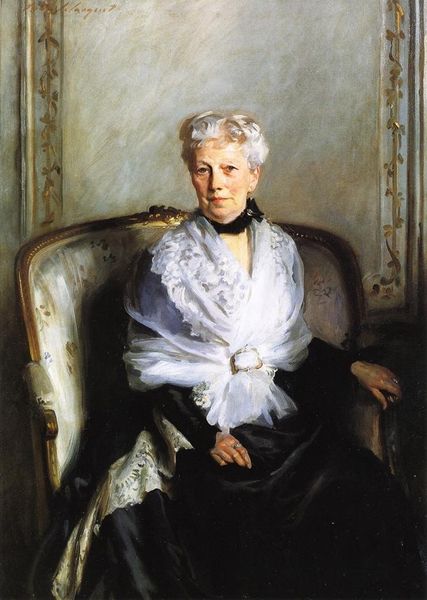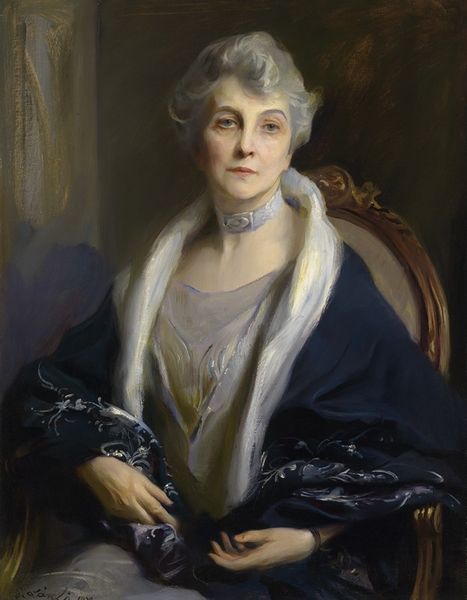
Copyright: Public domain
Curator: Raimundo de Madrazo's portrait of "The Marchioness of Perinat," completed in 1891, presents a fascinating glimpse into the era's high society. Editor: It's immediately striking, isn’t it? The somber palette against the deep crimson backdrop lends an almost theatrical air. The subdued emotion really holds you captive. Curator: Indeed. Observe how Madrazo masterfully juxtaposes textures—the luxurious sheen of her silk gown, the delicate embroidery, and the subtle rendering of her aging face. There's a deliberate use of light and shadow. Editor: Yes, and how does the sitter’s social positioning inform our viewing of this portrait? Her black attire might speak of mourning or perhaps of a more severe, conservative persona aligning with societal expectations. Curator: Considering its presentation at the Prado Museum today, we could even argue that it transcends individual representation to reflect the aristocratic values of that time, solidified within the national narrative through art. Her composed demeanor and the sumptuous surroundings broadcast the status associated with her lineage. Editor: To me, her expression suggests a complex individual, far beyond just aristocratic stoicism. You sense the layers of life experience, and perhaps also the limitations imposed upon her gender and social standing at the end of the 19th century. The artist succeeds to capture something intangible here, doesn't he? Curator: Absolutely, and beyond a personal record, the portrait allows an examination of class structures and ideals around femininity. What were the performative elements for women of stature within the complex socio-political conditions of Spain at this period? Editor: That really gets you thinking! It shows how seemingly straightforward depictions, especially from the Realist and Academic traditions, carry heavy implications. Curator: Very true, it is more than what first meets the eye. It is through its subtle interplay of elements, this image provokes deeper contemplations on power, representation, and time itself. Editor: Yes, and these paintings like this help make visible how people understood those structures. I appreciate your input here today.
Comments
No comments
Be the first to comment and join the conversation on the ultimate creative platform.
